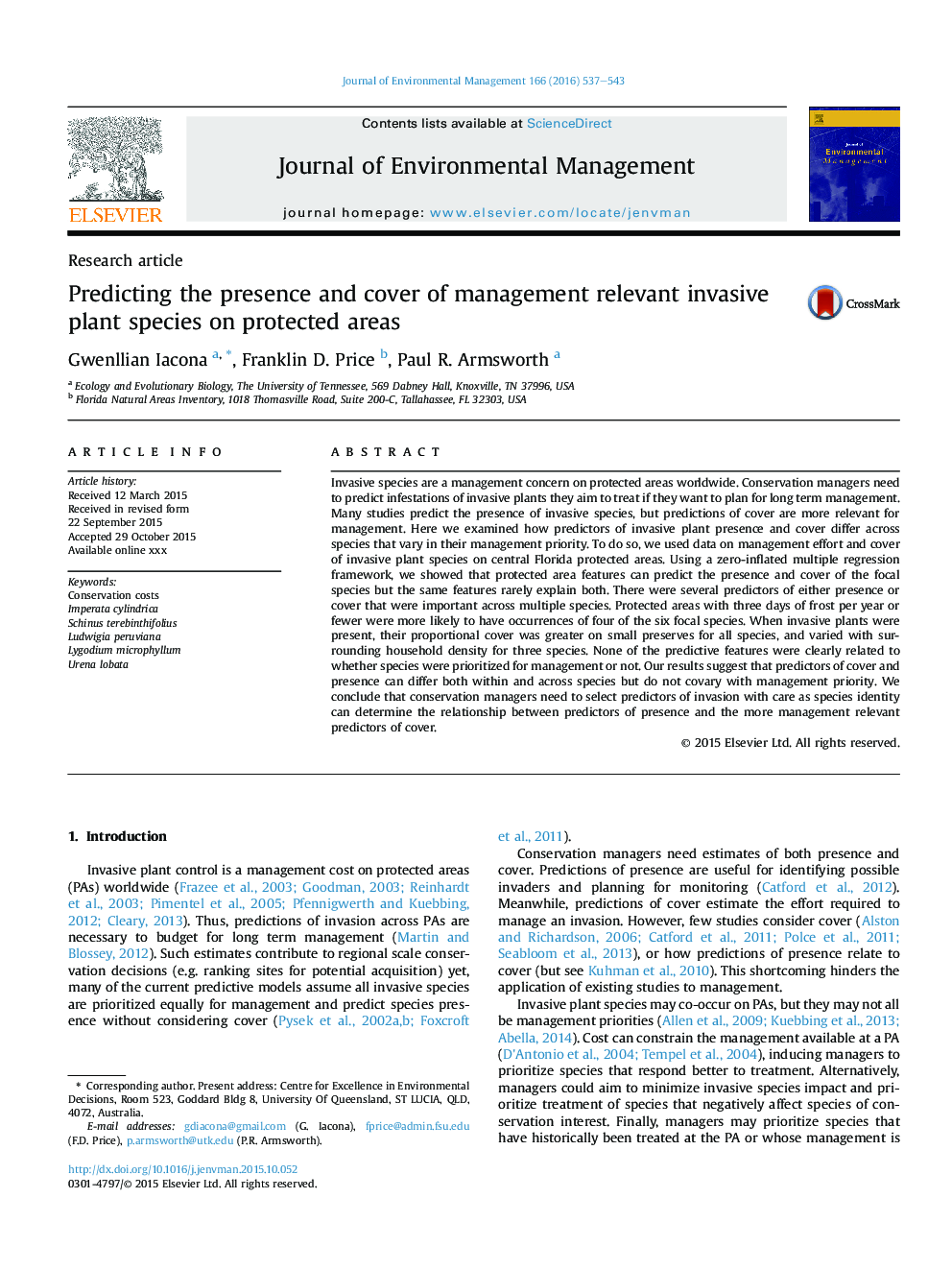| Article ID | Journal | Published Year | Pages | File Type |
|---|---|---|---|---|
| 7481410 | Journal of Environmental Management | 2016 | 7 Pages |
Abstract
Invasive species are a management concern on protected areas worldwide. Conservation managers need to predict infestations of invasive plants they aim to treat if they want to plan for long term management. Many studies predict the presence of invasive species, but predictions of cover are more relevant for management. Here we examined how predictors of invasive plant presence and cover differ across species that vary in their management priority. To do so, we used data on management effort and cover of invasive plant species on central Florida protected areas. Using a zero-inflated multiple regression framework, we showed that protected area features can predict the presence and cover of the focal species but the same features rarely explain both. There were several predictors of either presence or cover that were important across multiple species. Protected areas with three days of frost per year or fewer were more likely to have occurrences of four of the six focal species. When invasive plants were present, their proportional cover was greater on small preserves for all species, and varied with surrounding household density for three species. None of the predictive features were clearly related to whether species were prioritized for management or not. Our results suggest that predictors of cover and presence can differ both within and across species but do not covary with management priority. We conclude that conservation managers need to select predictors of invasion with care as species identity can determine the relationship between predictors of presence and the more management relevant predictors of cover.
Related Topics
Physical Sciences and Engineering
Energy
Renewable Energy, Sustainability and the Environment
Authors
Gwenllian Iacona, Franklin D. Price, Paul R. Armsworth,
